As the Yule Tide season gets into full swing, ELECTRICITYCLUB.CO.UK presents a collection of modern seasonal tunes with a more artful slant…
With a song to play on each of the 25 days in December until Christmas, some are covers with a modern approach while others gather their thoughts and emotions into original compositions. But each has their own take on the holiday period, whether happy or sad or both.
Synths at Christmas are not entirely new; ‘Last Christmas’ by WHAM! was primarily made with a Roland Juno 60 while BAND AID’s ‘Do They Know It’s Christmas? was dominated by PPG Wave 2.2 with a percussive sample taken from ‘Memories Fade’ by TEARS FOR FEARS also being key to the intro.
However the traditional nature of Christmas often dictates traditional instrumentation in its songs, which means that Christmas synth songs are comparatively uncommon and a more recent phenomenon.
Whatever your plans whether with the family or in the studio, please remember, a synth is for life and not just for Christmas… may it bring you lots of cheer! The 25 songs are presented in yearly then alphabetical order within…
BE MUSIC Rocking Carol (1982)
 A Be Music production for a limited edition flexi-disc of 4400 given away at The Haçienda on Christmas Eve 1982, with the greeting “Merry Xmas From The Haçienda And Factory Records”, this was NEW ORDER covering the traditional Czech seasonal tune also known as ‘Jesus Sweetly Sleep’ and ‘We Will Rock You’ as a robotic electronic tone poem. The second track was a version of Ludwig van Beethoven’s ‘Ode To Joy’ in a similar style!
A Be Music production for a limited edition flexi-disc of 4400 given away at The Haçienda on Christmas Eve 1982, with the greeting “Merry Xmas From The Haçienda And Factory Records”, this was NEW ORDER covering the traditional Czech seasonal tune also known as ‘Jesus Sweetly Sleep’ and ‘We Will Rock You’ as a robotic electronic tone poem. The second track was a version of Ludwig van Beethoven’s ‘Ode To Joy’ in a similar style!
Available on the compilation album ‘Ghosts of Christmas Past (Remake)’ (V/A) via Les Disques du Crépuscule
EURYTHMICS Winter Wonderland (1987)
 Recorded as part of an album on behalf of Special Olympics that featured U2, Madonna, Whitney Houston, Bruce Springsteen, Bryan Adams and Alison Moyet among others, EURYTHMICS’ glistening electronic take on romance during the winter season was cited by ASCAP as now the most played version of the song which was made famous by Darlene Love on the classic 1963 album ‘A Christmas Gift For You From Phil Spector’.
Recorded as part of an album on behalf of Special Olympics that featured U2, Madonna, Whitney Houston, Bruce Springsteen, Bryan Adams and Alison Moyet among others, EURYTHMICS’ glistening electronic take on romance during the winter season was cited by ASCAP as now the most played version of the song which was made famous by Darlene Love on the classic 1963 album ‘A Christmas Gift For You From Phil Spector’.
Available on the compilation album ‘A Very Special Christmas’ (V/A) via Universal Music
S.P.O.C.K White Christmas (1992)
 Swedish electronic pop veterans S.P.O.C.K celebrated their 35th Anniversary in 2023; originally recorded for Energy Rekords’ ‘Virtual X-Mas 92’ EP and then a bonus song on their 1995 compilation ‘A Piece Of The Action’, this cover of the Irving Berlin standard made famous by Bing Crosby was suitably melodramatic as the holiday season was celebrated in The Neutral Zone while under threat of an alien attack.
Swedish electronic pop veterans S.P.O.C.K celebrated their 35th Anniversary in 2023; originally recorded for Energy Rekords’ ‘Virtual X-Mas 92’ EP and then a bonus song on their 1995 compilation ‘A Piece Of The Action’, this cover of the Irving Berlin standard made famous by Bing Crosby was suitably melodramatic as the holiday season was celebrated in The Neutral Zone while under threat of an alien attack.
Available on the compilation album ‘Virtual 2020 X-Mas’ (V/A) via Energy Rekords
https://www.facebook.com/StarPilotOnChannelK/
SAINT ETIENNE Featuring TIM BURGESS I Was Born On Christmas Day (1993)
 Delightfully catchy with a house-laden bounce, ‘I Was Born on Christmas Day’ was written in acknowledgement of band member Bob Stanley’s birthday for an EP ‘Xmas 93’. Featuring a duet between Sarah Cracknell and special guest vocals by Tim Burgess from THE CHARLATANS, the joyful narrative saw the couple elope, confusing some fans and press who thought the press photos were for real.
Delightfully catchy with a house-laden bounce, ‘I Was Born on Christmas Day’ was written in acknowledgement of band member Bob Stanley’s birthday for an EP ‘Xmas 93’. Featuring a duet between Sarah Cracknell and special guest vocals by Tim Burgess from THE CHARLATANS, the joyful narrative saw the couple elope, confusing some fans and press who thought the press photos were for real.
Available on the SAINT ETIENNE album ’A Glimpse Of Stocking’ via PIAS
DEAD OR ALIVE Blue Christmas (2000)
 Originally recorded as a sparse ballad for the B-side of 1990 DEAD OR ALIVE single ‘Your Sweetness Is Your Weakness’, Pete Burns’ foray into the music for holiday season was given a dancier makeover in 2000 by band mate Steve Coy. In hindsight, now sounds like a stylistic blue print for PET SHOP BOYS ‘It Doesn’t Often Snow At Christmas’. The two would later work together on the excellent if menacing ‘Jack & Jill Party’ in 2004.
Originally recorded as a sparse ballad for the B-side of 1990 DEAD OR ALIVE single ‘Your Sweetness Is Your Weakness’, Pete Burns’ foray into the music for holiday season was given a dancier makeover in 2000 by band mate Steve Coy. In hindsight, now sounds like a stylistic blue print for PET SHOP BOYS ‘It Doesn’t Often Snow At Christmas’. The two would later work together on the excellent if menacing ‘Jack & Jill Party’ in 2004.
Available on the DEAD OR ALIVE album ‘Fragile’ via Demon Music Group
https://www.discogs.com/artist/46720-Dead-Or-Alive
SALLY SHAPIRO Anorak Christmas (2006)
 With their naïve wispiness, understated cinematics and disco beats, if there act who are ably suited to Christmas pop music, it is Swedish duo SALLY SHAPIRO. A cover of a song by NiXON, the project of fellow Swede Roger Gunnarsson, the lines “The first time that I saw your face on a cold December night, it was a Tuesday on a gig with a band that we both liked” captured an innocent romance and the aural warmth of the named apparel.
With their naïve wispiness, understated cinematics and disco beats, if there act who are ably suited to Christmas pop music, it is Swedish duo SALLY SHAPIRO. A cover of a song by NiXON, the project of fellow Swede Roger Gunnarsson, the lines “The first time that I saw your face on a cold December night, it was a Tuesday on a gig with a band that we both liked” captured an innocent romance and the aural warmth of the named apparel.
Available on the SALLY SHAPIRO album ‘Disco Romance’ via Paper Bag Records
https://www.facebook.com/shapirosally
PET SHOP BOYS It Doesn’t Often Snow At Christmas (2009)
 Originally recorded in 1997 for an exclusive fan club single but remixed in 2009, ‘It Doesn’t Often Snow At Christmas’ was a suitably cynical offering. Famous for keeping THE POGUES ‘Farytale Of New York’ off the 1987 UK Christmas No1 spot with their cover of ‘Always On My Mind’, while this didn’t hit those commercial heights, it provided a very PET SHOP BOYS take on the madness of the festive season.
Originally recorded in 1997 for an exclusive fan club single but remixed in 2009, ‘It Doesn’t Often Snow At Christmas’ was a suitably cynical offering. Famous for keeping THE POGUES ‘Farytale Of New York’ off the 1987 UK Christmas No1 spot with their cover of ‘Always On My Mind’, while this didn’t hit those commercial heights, it provided a very PET SHOP BOYS take on the madness of the festive season.
Available on the PET SHOP BOYS EP ‘Christmas’ via EMI Records
CHEW LIPS When You Wake Up (2010)
 With their last single having been released in 2012, CHEW LIPS might well have disbanded but in 2010, on the back of their only album ‘Unicorn’ and its subsequent tour, they were on a productive high. ‘When You Wake Up’ was a bonus tune recorded and given away as a Christmas gift to fans at the end of that very successful year. Delivered with lead singer Tigs’ usual feisty panache, listening back only highlights how much CHEW LIPS are missed.
With their last single having been released in 2012, CHEW LIPS might well have disbanded but in 2010, on the back of their only album ‘Unicorn’ and its subsequent tour, they were on a productive high. ‘When You Wake Up’ was a bonus tune recorded and given away as a Christmas gift to fans at the end of that very successful year. Delivered with lead singer Tigs’ usual feisty panache, listening back only highlights how much CHEW LIPS are missed.
Originally released as a free download via https://soundcloud.com/chewlips/when-you-wake-up
https://www.facebook.com/CHEWLiPS/
HURTS All I Want For Christmas Is New Year’s Day (2010)
 With their TAKE THAT dressed as ULTRAVOX template, following the success of their debut album ‘Happiness’, Theo Hutchcraft and Adam Anderson turned their attentions to memories of “the worst Christmas of our lives”. In true Bros Go To Bavaria style, despite the mournful start, ‘All I Want For Christmas Is New Year’s Day’ transformed itself into a hopeful uplifting anthem with a big chorus and lashings of tubular bells.
With their TAKE THAT dressed as ULTRAVOX template, following the success of their debut album ‘Happiness’, Theo Hutchcraft and Adam Anderson turned their attentions to memories of “the worst Christmas of our lives”. In true Bros Go To Bavaria style, despite the mournful start, ‘All I Want For Christmas Is New Year’s Day’ transformed itself into a hopeful uplifting anthem with a big chorus and lashings of tubular bells.
Available on the HURTS album ‘Happiness’ via Major Label / RCA
http://www.informationhurts.com/
LOLA DUTRONIC Another Christmas Without Snow (2010)
 In the UK, a wet Christmas is always more likely, but LOLA DUTRONIC’s ‘Another Christmas Without Snow’ resonated with its melancholic yet pretty demeanour. The project of Canadian producer Richard Citroen and using a flexible roster of wispy female vocalists, the tones of Lola Dee came over all dreamy like SAINT ETIENNE and conveyed the season’s mixed emotions. In 2014, they presented ‘The Christmas Disco’.
In the UK, a wet Christmas is always more likely, but LOLA DUTRONIC’s ‘Another Christmas Without Snow’ resonated with its melancholic yet pretty demeanour. The project of Canadian producer Richard Citroen and using a flexible roster of wispy female vocalists, the tones of Lola Dee came over all dreamy like SAINT ETIENNE and conveyed the season’s mixed emotions. In 2014, they presented ‘The Christmas Disco’.
Available on LOLA DUTRONIC single ‘(Another) Christmas Without Snow’ via Lola Dutronic
https://www.facebook.com/LOLA-DUTRONIC-80232595392/
ERASURE Gaudete (2013)
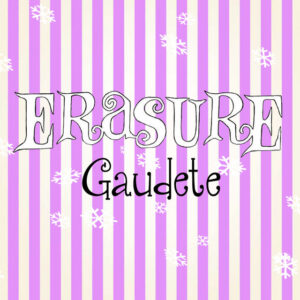 Andy Bell and Vince Clarke’s version of this traditional Ecclesiastical Latin carol continued an ERASURE tradition that had first begun with ‘God Rest Ye Merry Gentlemen’ for the CD edition of the ‘Crackers International’ EP in 1988. With a precise electronic backbeat, ‘Gaudete’ was taken from its 16th Century origins and thrown into the new millennium with a cheeky ‘Ice Machine’ reference for good measure.
Andy Bell and Vince Clarke’s version of this traditional Ecclesiastical Latin carol continued an ERASURE tradition that had first begun with ‘God Rest Ye Merry Gentlemen’ for the CD edition of the ‘Crackers International’ EP in 1988. With a precise electronic backbeat, ‘Gaudete’ was taken from its 16th Century origins and thrown into the new millennium with a cheeky ‘Ice Machine’ reference for good measure.
Available on the ERASURE album ‘Snow Globe’ via Mute Artists
HYPERBUBBLE A Synthesizer for Christmas (2013)
 Whether it was a Casio, Yamaha or Roland, everyone who ever loved synth music wanted ‘A Synthesizer For Christmas’. Texan synthesizer couple HYPERBUBBLE took that enduring memory and turned it into a delightful synthpop ditty that could resonate with electronic geeks from 8 to 80 the world over. Short but very sweet, it was another joyous “cartoon automaton symphony” from Jess and Jeff DeCuir.
Whether it was a Casio, Yamaha or Roland, everyone who ever loved synth music wanted ‘A Synthesizer For Christmas’. Texan synthesizer couple HYPERBUBBLE took that enduring memory and turned it into a delightful synthpop ditty that could resonate with electronic geeks from 8 to 80 the world over. Short but very sweet, it was another joyous “cartoon automaton symphony” from Jess and Jeff DeCuir.
Available on the HYPERBUBBLE single ‘A Synthesizer For Christmas’ via Socket Sounds
VILE ELECTRODES The Ghosts Of Christmas (2013)
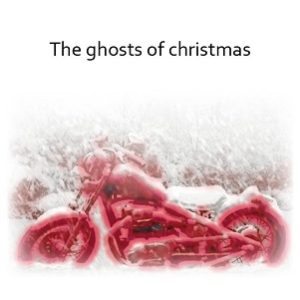 If ‘Twin Peaks’ met ‘Leader Of The Pack’ under the mistletoe, it would probably sound like ‘The Ghosts Of Christmas’. Possibly the best Christmas tune of the last 15 years, VILE ELECTRODES’ harrowing tale of a departed loved one and three wise men dressed in blue with dreadful gifts to bear is strangely enticing, with the beautifully haunting echoes of Julee Cruise’s ‘The Nightingale’ lingering over the frozen lake.
If ‘Twin Peaks’ met ‘Leader Of The Pack’ under the mistletoe, it would probably sound like ‘The Ghosts Of Christmas’. Possibly the best Christmas tune of the last 15 years, VILE ELECTRODES’ harrowing tale of a departed loved one and three wise men dressed in blue with dreadful gifts to bear is strangely enticing, with the beautifully haunting echoes of Julee Cruise’s ‘The Nightingale’ lingering over the frozen lake.
Available on the VILE ELECTRODES EP ‘The Ghosts Of Christmas’ via Vile Electrodes
http://www.vileelectrodes.com/
HANNAH PEEL Find Peace (2014)
 ‘Find Peace’ was a Christmas song longing for the cold but merry winters of yesteryear under the modern day spectre of global warming, armed conflict and political tension. The off-kilter analogue buzzing and almost random sequences made for a striking listen as a frantic percussive death rattle and an emotive synth drone take hold to provide an appropriate backdrop for the eerie but beautiful voice of Hannah Peel.
‘Find Peace’ was a Christmas song longing for the cold but merry winters of yesteryear under the modern day spectre of global warming, armed conflict and political tension. The off-kilter analogue buzzing and almost random sequences made for a striking listen as a frantic percussive death rattle and an emotive synth drone take hold to provide an appropriate backdrop for the eerie but beautiful voice of Hannah Peel.
Available on the HANNAH PEEL single ‘Find Peace’ via Snowflakes Christmas Singles Club
MARSHEAUX We Met Bernard Sumner At A Christmas Party Last Night (2015)
 ‘We Met Bernard Sumner At A Christmas Party Last Night’ was a wonderfully whispery synthpop number that capture that classic wispy MARSHEAUX vibe. The lyrics were constructed from the song and album titles of NEW ORDER to provide an imaginary narrative on Marianthi Melitsi and Sophie Sarigiannidou surreally bumping into the Manchester combo’s lead singer at a Yule Tide function.
‘We Met Bernard Sumner At A Christmas Party Last Night’ was a wonderfully whispery synthpop number that capture that classic wispy MARSHEAUX vibe. The lyrics were constructed from the song and album titles of NEW ORDER to provide an imaginary narrative on Marianthi Melitsi and Sophie Sarigiannidou surreally bumping into the Manchester combo’s lead singer at a Yule Tide function.
Available on the album ‘Ghost Of Christmas Past (Remake)’ (V/A) via Les Disques du Crépuscule
SPARKS Christmas Without A Prayer (2015)
 On 1974’s ‘Kimono My House’ album, the Mael brothers recorded a song called ‘Thank God It’s Not Christmas’, a typically perverse SPARKS romp that had nothing to do as such with the holiday season. After their fruitful FFS collaboration WITH FRANZ FERDINAND, Russell and Ron ended the year with ‘Christmas Without A Prayer’, a fitting offering which also amusingly outlined that albums by WINGS were actually unwanted gifts.
On 1974’s ‘Kimono My House’ album, the Mael brothers recorded a song called ‘Thank God It’s Not Christmas’, a typically perverse SPARKS romp that had nothing to do as such with the holiday season. After their fruitful FFS collaboration WITH FRANZ FERDINAND, Russell and Ron ended the year with ‘Christmas Without A Prayer’, a fitting offering which also amusingly outlined that albums by WINGS were actually unwanted gifts.
Available on the SPARKS single ‘Christmas Without A Prayer’ via Lil’ Beethoven Records
VICE VERSA Little Drum Machine Boy (2015)
 “A twisted cover of a cover of a cover”, this synthy reinterpretation of the tune based on a traditional Czech carol made famous by a bizarre but enjoyable version by David Bowie and Bing Crosby, saw former ABC stalwarts Mark White and Stephen Singleton reconvene as VICE VERSA to wax lyrical about 303s, 808s, 909s and a “shiny new Roland toy” in a combination of sleigh bells, squelching arpeggios and of course, drum machines…
“A twisted cover of a cover of a cover”, this synthy reinterpretation of the tune based on a traditional Czech carol made famous by a bizarre but enjoyable version by David Bowie and Bing Crosby, saw former ABC stalwarts Mark White and Stephen Singleton reconvene as VICE VERSA to wax lyrical about 303s, 808s, 909s and a “shiny new Roland toy” in a combination of sleigh bells, squelching arpeggios and of course, drum machines…
Available as a free download via https://soundcloud.com/vice-versa-electrogenesis/little-drum-machine-boy
https://www.facebook.com/Vice-Versa-Electrogenesis-806726912703189/
ASSEMBLAGE 23 December (2016)
 “Silent and alone, trying to make sense”, when you’ve had enough of Christmas shopping and the in-laws, there’s probably nothing better to let off steam than a bit of ASSEMBLAGE 23. While not exactly seasonal, Tom Shear’s Futurepop discoscape captured many of the mixed emotions endemic with the final month of the year, because in his determination to endure and to thrive, “when December ends, the pain will disappear…”
“Silent and alone, trying to make sense”, when you’ve had enough of Christmas shopping and the in-laws, there’s probably nothing better to let off steam than a bit of ASSEMBLAGE 23. While not exactly seasonal, Tom Shear’s Futurepop discoscape captured many of the mixed emotions endemic with the final month of the year, because in his determination to endure and to thrive, “when December ends, the pain will disappear…”
Available on the ASSEMBLAGE 23 album ‘Endure’ via Metropolis
SIN COS TAN Dead By X-Mas (2016)
 A superb cover of Finnish metal glamsters HANOI ROCKS written by guitarist Andy McCoy predicticing where the band’s lifestyle could lead, this take on ‘Dead By X-Mas’ from the nocturnal synth duo SIN COS TAN came over a bit like Billy Idol gone electro, but with an elegiac twist. In 2006, the former William Broad himself issued his own collection of seasonal tunes entitled ‘Happy Holidays’ … it’s a nice day for a ‘White Christmas’!
A superb cover of Finnish metal glamsters HANOI ROCKS written by guitarist Andy McCoy predicticing where the band’s lifestyle could lead, this take on ‘Dead By X-Mas’ from the nocturnal synth duo SIN COS TAN came over a bit like Billy Idol gone electro, but with an elegiac twist. In 2006, the former William Broad himself issued his own collection of seasonal tunes entitled ‘Happy Holidays’ … it’s a nice day for a ‘White Christmas’!
Available as a free download via https://soundcloud.com/theofficialjorihulkkonen/sin-cos-tan-dead-by-x-mas
https://www.facebook.com/homeofsincostan/
FERAL FIVE I Want U (2017)
 In a feminist call to reject the trash, with female empowerment lyrics like “I don’t need any money or a new handbag, I just need a kind of thing I’ve never had, who says you have to have some shabby gifts”, FERAL FIVE attacked tacky commercialism at Christmas in a sonic cacophony of crunchy bass guitar, big beats, sparkling electronics and chilling string machines for an alternative take on accepted practices during the seasonal festivities.
In a feminist call to reject the trash, with female empowerment lyrics like “I don’t need any money or a new handbag, I just need a kind of thing I’ve never had, who says you have to have some shabby gifts”, FERAL FIVE attacked tacky commercialism at Christmas in a sonic cacophony of crunchy bass guitar, big beats, sparkling electronics and chilling string machines for an alternative take on accepted practices during the seasonal festivities.
Available on the FERAL FIVE single ‘I Want U’ via Primitive Light Recordings
CIRCUIT3 I Believe In Father Christmas (2018)
 Made famous by Greg Lake, CIRCUIT3 used analogue synths such as a Sequential Pro-One, Roland JX10, Korg Wavestation and Moog Sub37 to provide an eerie chill to the already cynical and morbid 1975 song protesting at the commercialisation of Christmas. The lyricist was KING CRIMSON’s Peter Sinfield who later wrote the words to BUCKS FIZZ’s No1 ‘The Land Of Make Believe’ which warned against the evils of Thatcherism.
Made famous by Greg Lake, CIRCUIT3 used analogue synths such as a Sequential Pro-One, Roland JX10, Korg Wavestation and Moog Sub37 to provide an eerie chill to the already cynical and morbid 1975 song protesting at the commercialisation of Christmas. The lyricist was KING CRIMSON’s Peter Sinfield who later wrote the words to BUCKS FIZZ’s No1 ‘The Land Of Make Believe’ which warned against the evils of Thatcherism.
Available on the CIRCUIT 3 single ‘I Believe In Father Christmas’ via Diode Records
WAVESHAPER Walking In The Air (2020)
 Written by Howard Blake for the 1982 animated film ‘The Snowman’ which later added a cameo intro by David Bowie, ‘Walking In The Air’ became a hit for Aled Jones although the original version was actually sung by choir boy Peter Auty. Tom Andersson is the Swedish synthesist and retro gamer known as WAVESHAPER and his symphonic instrumental synthwave cover was both respectful and beautiful.
Written by Howard Blake for the 1982 animated film ‘The Snowman’ which later added a cameo intro by David Bowie, ‘Walking In The Air’ became a hit for Aled Jones although the original version was actually sung by choir boy Peter Auty. Tom Andersson is the Swedish synthesist and retro gamer known as WAVESHAPER and his symphonic instrumental synthwave cover was both respectful and beautiful.
Available as a free download via https://soundcloud.com/waveshaper-2/walking-in-the-air-waveshaper-synth-edit
https://www.facebook.com/Waveshaperofficial
RODNEY CROMWELL Cold Christmas (2022)
 If Canadian post-punk quartet ACTORS did Christmas songs, then it would have probably sounded like this gothic motorik number from the ever cheerful Rodney Cromwell. Written for Cherryade Records’ ‘A Very Cherry Christmas’ compilation, its chilling ARP synth strings and driving bass guitar was in total antithesis to Cliff Richard with bleak observational lyrics “like ‘Eleanor Rigby’ turbo-charged for 2022”.
If Canadian post-punk quartet ACTORS did Christmas songs, then it would have probably sounded like this gothic motorik number from the ever cheerful Rodney Cromwell. Written for Cherryade Records’ ‘A Very Cherry Christmas’ compilation, its chilling ARP synth strings and driving bass guitar was in total antithesis to Cliff Richard with bleak observational lyrics “like ‘Eleanor Rigby’ turbo-charged for 2022”.
Available on the RODNEY CROMWELL single ‘Cold Christmas’ via Happy Robots Records
https://www.facebook.com/rodneycromwellartist
SOFTWAVE featuring BARNEY ASHTON-BULLOCK Will It Ever Be Christmas Again? (2022)
 “Of the year behind that we survived and the future we’d wish to see”, ‘Will It Ever Be Christmas Again?’ was presented as “Probably the first synthpop Christmas song in Danish music history”, SOFTWAVE provided a hopeful message to hold back on overindulgence. ‘Andy Bell Is Torsten’ writer Barney Ashton-Bullock made a Santa Claus cameo reminding everyone that “Self-service, doesn’t mean self, self, self…”
“Of the year behind that we survived and the future we’d wish to see”, ‘Will It Ever Be Christmas Again?’ was presented as “Probably the first synthpop Christmas song in Danish music history”, SOFTWAVE provided a hopeful message to hold back on overindulgence. ‘Andy Bell Is Torsten’ writer Barney Ashton-Bullock made a Santa Claus cameo reminding everyone that “Self-service, doesn’t mean self, self, self…”
Available on the SOFTWAVE single ‘Will It Ever Be Christmas Again?’ via Softwave
GEMMA CULLINGFORD In The Bleak Midwinter (2023)
 Something of a tradition having covered a variety of recent and traditional seasonal tunes like ‘Walking In The Air’, ‘Lonely This Christmas’ and ‘Deck The Halls’ in previous years, Norwich-based Gemma Cullingford took Christina Rossetti’s poem and Gustav Holst’s musical arrangement of ‘In The Bleak Midwinter’ into darker and colder electro dance territory, reflecting today’s divided world in a cost of living crisis.
Something of a tradition having covered a variety of recent and traditional seasonal tunes like ‘Walking In The Air’, ‘Lonely This Christmas’ and ‘Deck The Halls’ in previous years, Norwich-based Gemma Cullingford took Christina Rossetti’s poem and Gustav Holst’s musical arrangement of ‘In The Bleak Midwinter’ into darker and colder electro dance territory, reflecting today’s divided world in a cost of living crisis.
Available on the GEMMA CULLINGFORD single ‘In The Bleak Midwinter’ via Elmo Records
https://www.gemmacullingford.co.uk/
A further varied collection of seasonal synth based tunes compiled by ELECTRICITYCLUB.CO.UK can be listened to at: https://open.spotify.com/playlist/7vIIjZkGd3cVOSarUPvX85
Text by Chi Ming Lai
2nd December 2023





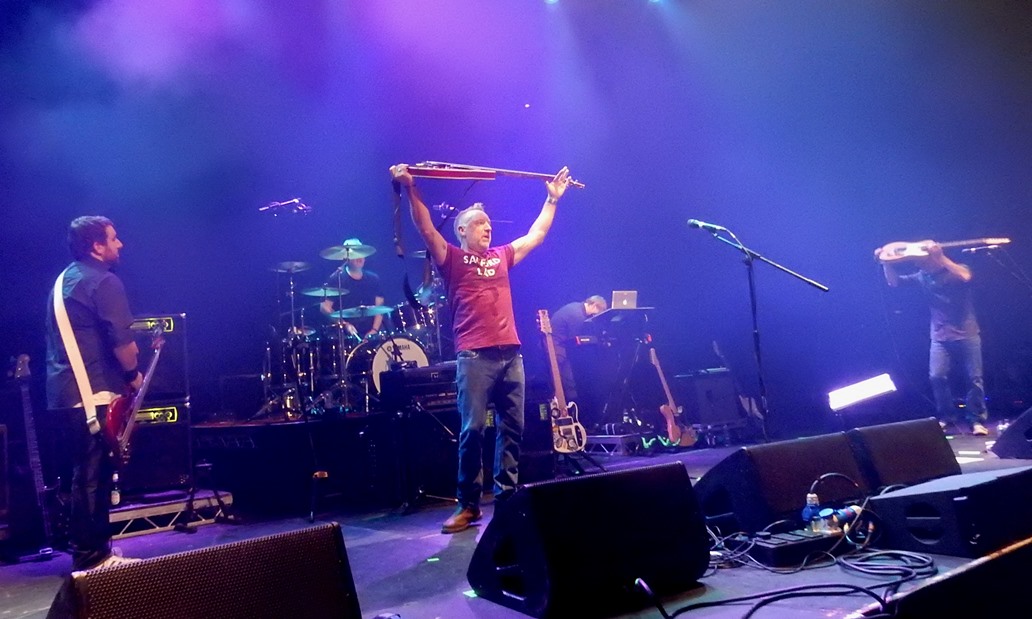






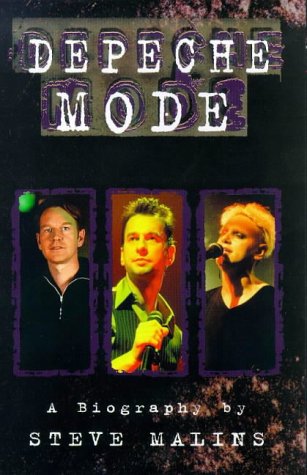
























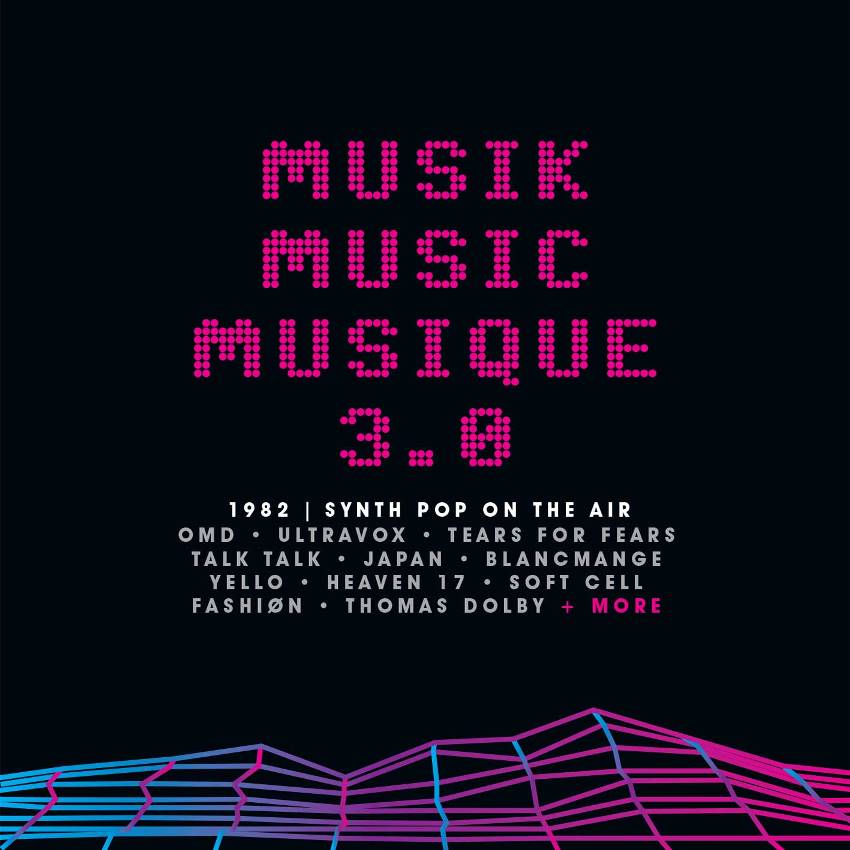
Follow Us!